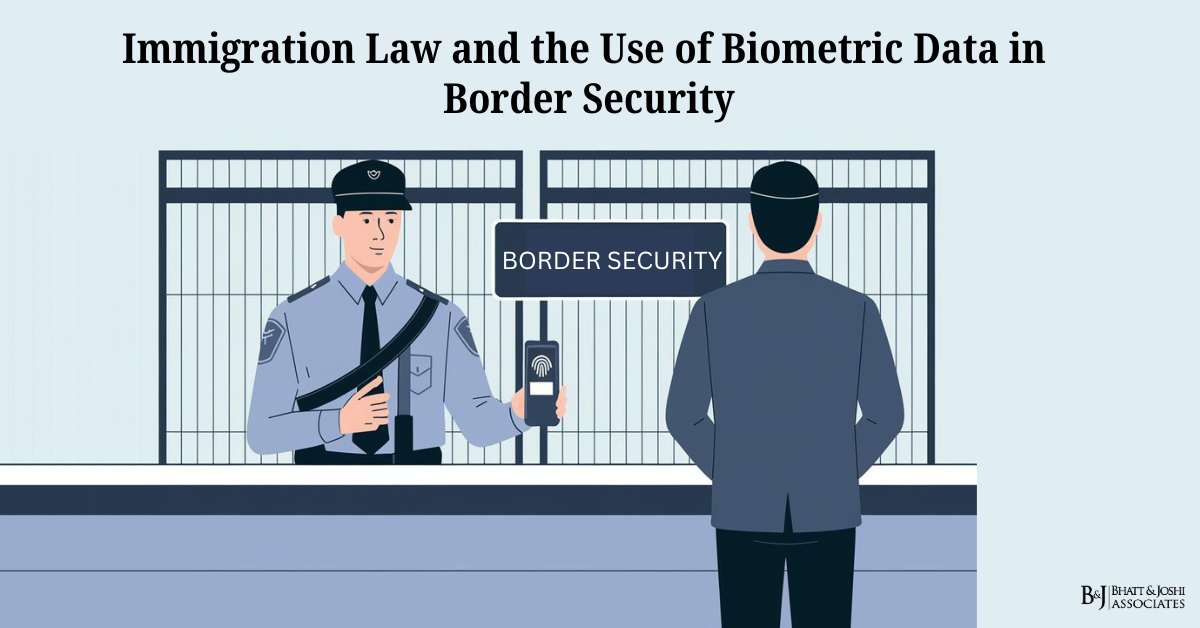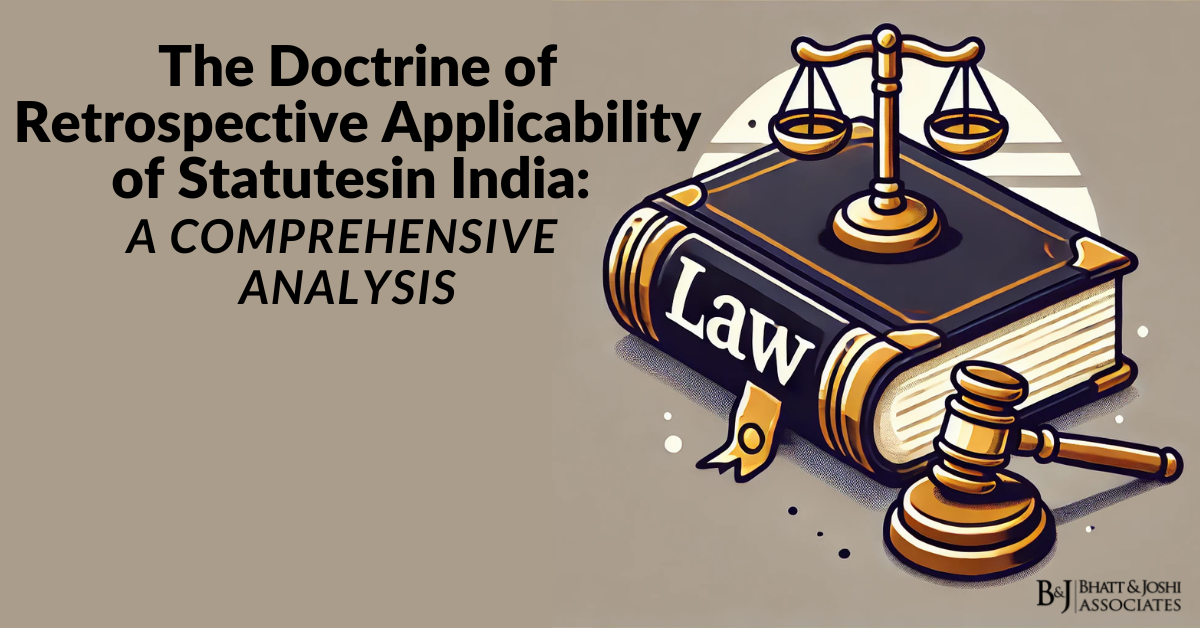Introduction
The use of biometric data in border security has become a cornerstone of modern immigration control and enforcement. Governments around the world are increasingly relying on biometric technologies such as fingerprinting, facial recognition, and iris scanning to enhance the security of their borders, streamline immigration processes, and prevent illegal entry. These technologies offer significant benefits in terms of accuracy, efficiency, and security. However, they also raise complex legal and ethical questions, particularly concerning privacy, data protection, human rights, and the potential for misuse.
The intersection of immigration law and the use of biometric data in border security presents a range of challenges. On one hand, biometric technologies can help governments manage large volumes of travelers, detect fraudulent identities, and ensure that individuals with security risks are identified and monitored. On the other hand, the collection, storage, and use of biometric data involve sensitive personal information that is closely tied to an individual’s identity. This necessitates a careful balancing of national security interests with the protection of individual rights.
This article explores the legal and ethical challenges associated with the use of biometric data in border security. It examines the regulatory frameworks that govern the collection and use of biometric data in immigration contexts, discusses the implications for individual rights, and considers the broader societal impact of biometric surveillance in border control.
The Role of Biometric Data in Border Security
Biometric data plays a crucial role in modern border security by providing a reliable means of identifying individuals as they enter or exit a country. Unlike traditional forms of identification, such as passports or visas, biometric data is unique to each individual and cannot be easily forged or duplicated. This makes it an ideal tool for verifying identities, detecting fraudulent documents, and preventing unauthorized entry.
Governments use biometric data at various stages of the immigration process, from the issuance of visas and travel documents to the inspection of travelers at border crossings. For example, travelers may be required to provide fingerprints or facial images when applying for a visa, and these biometrics may be checked against international databases to verify the individual’s identity and assess any potential security risks. Upon arrival at a border, travelers may be subjected to further biometric checks, such as fingerprint scanning or facial recognition, to confirm their identity and ensure that they match the person authorized to enter the country.
The use of biometric data in border security also extends to the monitoring of individuals within a country, particularly those with temporary or conditional immigration status. For instance, biometric data may be used to track the movements of individuals on student visas, work permits, or other temporary visas, ensuring that they comply with the terms of their entry. Additionally, biometric data can be used to identify and apprehend individuals who overstay their visas or who are otherwise in violation of immigration laws.
While the benefits of biometric data in border security are clear, its use also raises significant legal and ethical concerns, particularly regarding the protection of privacy and civil liberties.
Legal Frameworks Governing the Use of Biometric Data in Border Security
The collection and use of biometric data in border security are governed by a complex web of legal frameworks, which vary significantly across different jurisdictions. These frameworks include immigration laws, data protection regulations, and international agreements, each of which plays a critical role in shaping how biometric data is collected, processed, and used.
Immigration Laws
Immigration laws provide the legal basis for the collection and use of biometric data in border security. These laws typically grant governments broad powers to collect biometric data from individuals seeking to enter or remain in the country, often as a condition of entry or visa issuance.
In the United States, for example, the Immigration and Nationality Act (INA) provides the legal framework for the collection of biometric data from foreign nationals. The U.S. Department of Homeland Security (DHS), through agencies such as U.S. Customs and Border Protection (CBP) and U.S. Citizenship and Immigration Services (USCIS), is authorized to collect fingerprints, facial images, and other biometric data from individuals applying for visas, seeking entry at ports of entry, or adjusting their immigration status. This biometric data is stored in the Automated Biometric Identification System (IDENT), which is used to verify identities, detect fraudulent applications, and screen for security threats.
In the European Union, the Schengen Borders Code and the EU Visa Code provide the legal basis for the collection of biometric data in the context of border security. Under these regulations, biometric data, including fingerprints and facial images, are collected from visa applicants and travelers entering the Schengen Area. This data is stored in the Visa Information System (VIS) and the Schengen Information System (SIS), which are used by border authorities to verify the identity of travelers and ensure the security of the external borders of the EU.
While immigration laws provide governments with the authority to collect biometric data, they also impose certain obligations on authorities to ensure that the data is collected and used lawfully, fairly, and transparently. These obligations include providing individuals with information about the purpose of data collection, ensuring that data is only used for legitimate purposes, and protecting the data from unauthorized access or misuse.
Data Protection and Privacy Laws
Data protection and privacy laws are critical to regulating the collection, storage, and use of biometric data in border security. These laws are designed to protect individuals’ personal information, including biometric data, from misuse and to ensure that their rights are respected.
In the European Union, the General Data Protection Regulation (GDPR) provides a comprehensive legal framework for the protection of personal data, including biometric data. The GDPR classifies biometric data as a special category of personal data, which means that its processing is subject to stricter conditions. Under the GDPR, biometric data can only be processed if specific legal grounds are met, such as the individual’s explicit consent or the necessity of the processing for reasons of substantial public interest, such as border security.
The GDPR also imposes obligations on data controllers, including border authorities, to implement appropriate technical and organizational measures to protect biometric data, such as encryption and access controls. Additionally, individuals have rights under the GDPR, including the right to access their data, the right to rectify inaccuracies, and the right to object to the processing of their data in certain circumstances.
In the United States, data protection laws governing biometric data in border security are less comprehensive than in the EU. While there is no federal equivalent to the GDPR, certain federal laws, such as the Privacy Act of 1974, provide some protections for individuals’ personal information held by federal agencies, including biometric data. The Privacy Act requires federal agencies to ensure that records are accurate, relevant, and secure, and it gives individuals the right to access and amend their records. However, the Privacy Act contains several exceptions that limit its applicability to national security and law enforcement activities, which can impact the protection of biometric data collected for border security purposes.
At the state level, some U.S. states have enacted biometric privacy laws, such as Illinois’ Biometric Information Privacy Act (BIPA), which imposes strict requirements on the collection, use, and storage of biometric data. However, these state laws generally do not apply to federal immigration and border security activities.
International Agreements and Cooperation
The use of biometric data in border security is often facilitated by international agreements and cooperation between countries. These agreements provide the legal framework for the exchange of biometric data across borders and establish common standards for its collection and use.
One of the most significant international agreements in this context is the International Civil Aviation Organization’s (ICAO) standards for biometric passports, known as ePassports. These passports contain an embedded chip that stores the holder’s biometric data, such as a digital photograph and fingerprints. ICAO’s standards ensure that biometric passports are interoperable and secure, enabling countries to verify the identity of travelers at border crossings and prevent the use of fraudulent documents.
Another important example of international cooperation is the U.S. Visa Waiver Program (VWP), which allows citizens of certain countries to travel to the United States without a visa for short stays. As part of the VWP, participating countries are required to issue biometric passports and share biometric data with U.S. authorities for security screening purposes. This data sharing is facilitated by bilateral agreements that set out the terms and conditions for the exchange of biometric data, including safeguards to protect individuals’ privacy.
International agreements and cooperation are essential for addressing the global nature of migration and security challenges. However, they also raise important legal and ethical questions, particularly concerning the protection of individuals’ rights when their biometric data is shared with foreign governments or international organizations.
Challenges and Risks Associated with the Use of Biometric Data in Border Security
The use of biometric data in border security presents several challenges and risks that must be carefully managed to protect individual rights and ensure that immigration enforcement is conducted lawfully and ethically.
Privacy and Data Security Risks
The collection and use of biometric data in border security raise significant privacy concerns, particularly regarding the potential for misuse, data breaches, and unauthorized access. Biometric data is inherently sensitive, as it is uniquely tied to an individual’s identity and cannot be easily changed if compromised.
The large-scale collection and storage of biometric data by government agencies, particularly in centralized databases, increase the risk of data breaches and unauthorized access. If biometric data is hacked or leaked, it can have severe consequences for individuals, including identity theft, surveillance, and discrimination. Additionally, the immutability of biometric data means that once it is compromised, the individual cannot simply change their biometric identifiers, unlike passwords or other forms of authentication.
To mitigate these risks, border authorities must implement robust security measures to protect biometric data, including encryption, secure storage solutions, and access controls. Additionally, clear guidelines for data retention and destruction should be established to ensure that biometric data is not kept longer than necessary and is securely deleted when it is no longer needed.
Consent and Transparency
The issue of consent is central to the legal and ethical challenges associated with the use of biometric data in border security. Informed consent is a fundamental principle of data protection law, requiring that individuals be fully informed about the purpose, scope, and implications of data collection, and that they voluntarily agree to the processing of their data.
However, obtaining meaningful consent in the context of border security can be challenging. Individuals may feel compelled to provide their biometric data as a condition of entry into a country or to comply with immigration requirements. This creates a situation where consent may not be truly voluntary, raising ethical concerns about the autonomy of individuals and their ability to make informed decisions about their privacy.
Moreover, the use of biometric data in border security often lacks transparency. Travelers may not be fully aware of how their biometric data will be used, who will have access to it, or what safeguards are in place to protect their data. This lack of transparency can undermine public trust in biometric border security measures and raise concerns about potential misuse.
Discrimination and Bias
The use of biometric data in border security also has the potential to exacerbate existing inequalities and discrimination. Biometric technologies, such as facial recognition, have been shown to exhibit biases based on race, gender, and other characteristics, which can lead to disproportionate impacts on certain groups.
For example, facial recognition technology has been found to have higher error rates when identifying individuals with darker skin tones, women, and other marginalized groups. In the context of border security, this could result in certain travelers being unfairly targeted for additional scrutiny or being wrongly identified as security risks, leading to discrimination and stigmatization.
Public authorities must be vigilant in ensuring that biometric border security measures do not result in discriminatory outcomes and that they are implemented fairly and equitably. This may require conducting regular audits of biometric systems to assess their accuracy and fairness, as well as implementing measures to mitigate the risk of bias in biometric technologies.
Surveillance and Civil Liberties
The use of biometric data in border security raises broader concerns about the potential erosion of civil liberties and the normalization of surveillance. The deployment of biometric technologies at borders can create a precedent for their use in other areas of public life, leading to the expansion of surveillance practices and the blurring of boundaries between immigration enforcement and other forms of state surveillance.
For example, the use of facial recognition technology at border crossings could pave the way for its use in other contexts, such as monitoring public spaces, tracking individuals’ movements, or conducting mass surveillance. This raises important questions about the long-term implications of biometric surveillance for civil liberties and the potential for the abuse of power by authorities.
To address these concerns, it is essential that biometric border security measures are subject to strict legal and ethical oversight, including clear limitations on the scope and duration of biometric data collection and safeguards to protect against the misuse of data. Public authorities must also be transparent about the use of biometric data and engage with the public and civil society organizations to ensure that surveillance measures are aligned with societal values and expectations.
Ethical Principles for the Use of Biometric Data in Border Security
The use of biometric data in border security must be guided by ethical principles that balance the need to protect national security with the obligation to respect individual rights and freedoms. These principles include necessity and proportionality, transparency, non-discrimination, and accountability.
Necessity and Proportionality
The principles of necessity and proportionality are fundamental to the ethical use of biometric data in border security. The collection and use of biometric data must be necessary to achieve a legitimate national security objective, and it must be proportionate to the risks posed by the security threat. Public authorities must carefully assess the need for biometric data collection, considering whether less intrusive alternatives are available and whether the benefits of data collection outweigh the potential risks to individual rights.
For example, border authorities may need to collect biometric data, such as fingerprints or facial images, to verify the identity of travelers and prevent unauthorized entry. However, the scope and duration of data collection should be limited to what is strictly necessary to achieve these objectives, and the data should be securely stored and deleted once it is no longer needed.
Transparency
Transparency is essential to building public trust in the use of biometric data in border security. Public authorities must be transparent about the purpose, scope, and implications of biometric data collection, providing clear and accessible information to individuals about how their data will be used, who will have access to it, and what measures are in place to protect their privacy.
Transparency also requires public authorities to engage with the public and civil society organizations in the development and implementation of biometric border security measures. This may include conducting public consultations, publishing impact assessments, and providing regular updates on the use of biometric data in border security contexts.
Non-Discrimination
The principle of non-discrimination is critical to ensuring that biometric data collection in border security is conducted fairly and equitably. Public authorities must ensure that biometric surveillance measures do not disproportionately impact certain groups, such as racial or ethnic minorities, women, or vulnerable populations.
This requires careful consideration of the potential biases and inequalities associated with biometric technologies, as well as implementing safeguards to mitigate these risks. Public authorities should also ensure that biometric data collection is conducted in a manner that respects the dignity and rights of all individuals, regardless of their background or circumstances.
Accountability
Accountability is essential to ensuring that public authorities are held responsible for the collection and use of biometric data in border security. This requires the establishment of clear legal and ethical frameworks that define the roles and responsibilities of public authorities, as well as mechanisms for oversight and redress.
Accountability also requires public authorities to be transparent about their decision-making processes and to provide individuals with access to effective remedies if their rights are violated. This may include the right to access and correct their biometric data, the right to be informed about data breaches, and the right to seek legal redress if their data is misused.
Conclusion: Striking a Balance in the Use of Biometric Data in Border Security
The use of biometric data in border security presents significant opportunities and profound challenges. While biometric technologies offer the potential to enhance the security of borders, improve the efficiency of immigration processes, and prevent unauthorized entry, their use also raises complex legal and ethical questions that must be carefully navigated.
The legal frameworks governing the collection and use of biometric data in border security are diverse and complex, encompassing immigration laws, data protection regulations, and international agreements. Public authorities must ensure that their use of biometric data complies with these legal requirements and that it is conducted in a manner that respects individual rights and freedoms.
At the same time, the ethical challenges associated with biometric surveillance in border security require a balanced approach that safeguards national security while protecting civil liberties. The principles of necessity and proportionality, transparency, non-discrimination, and accountability should guide the collection and use of biometric data, ensuring that border security measures are both effective and respectful of human dignity.
As biometric technologies continue to evolve and become more integrated into border security practices, it is essential that legal and ethical considerations remain at the forefront of discussions about the future of immigration enforcement. By striking the right balance between security and individual rights, we can harness the benefits of biometric data while safeguarding the fundamental rights and freedoms that are the cornerstone of democratic societies.














